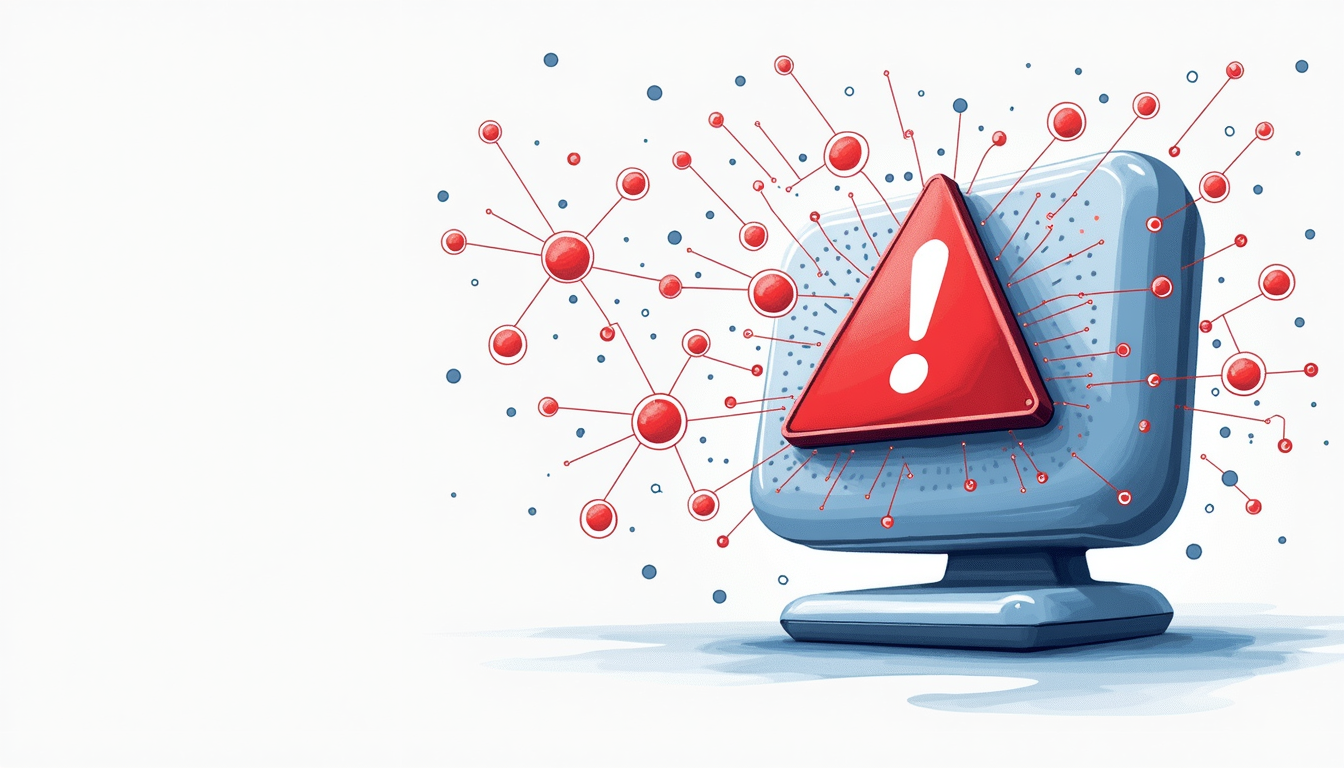Updated Jan 20, 2025
The integration of artificial intelligence in medical devices has sparked significant advancements, but with progress comes challenges. Two critical issues are AI model bias and cybersecurity threats. Both pose risks that could jeopardize patient safety and trust in these technologies. Understanding these issues is crucial for developing strategies to mitigate their impact.
Understanding AI Model Bias in Medical Devices
AI model bias in medical devices is a complex phenomenon that can lead to inaccurate outcomes or unfair treatment recommendations. But what does it mean exactly? Let’s break it down.
Defining AI Model Bias
At its core, AI model bias refers to the systematic prejudice in algorithmic decisions. When an AI system is trained on historical data, it can adopt the biases present in that data. This could stem from numerous factors, including demographic imbalances or outdated practices within the training datasets. For instance, if an AI model learns from data that under-represents certain patient demographics, it may misdiagnose or overlook conditions more prevalent in those groups.
The implications of AI model bias extend beyond mere misdiagnosis. Consider the ethical ramifications of an AI system that perpetuates existing healthcare disparities. For example, if algorithms are predominantly trained on data from one racial or socioeconomic group, they may fail to recognize symptoms that manifest differently in other populations. This not only affects individual patients but can also exacerbate health inequities on a broader scale, leading to a cycle of mistrust and disengagement from healthcare systems among marginalized communities.
Impact of AI Bias on Medical Devices
The consequences of AI bias in medical devices can be dire. Imagine a patient receiving incorrect diagnostic information due to a biased algorithm. This could lead to inappropriate treatments, further complicating an already delicate situation. Beyond individual patient outcomes, systemic bias can erode public confidence in healthcare technologies, leaving a significant dent in their effectiveness.
Medical devices rely on accurate data to perform life-saving functions. Bias introduces a layer of unpredictability, which is the last thing medical professionals need when juggling life-or-death decisions. Thus, the impact extends beyond mere numbers; it infiltrates the trust the healthcare system is built upon. For instance, if a widely used diagnostic tool consistently underperforms for certain demographics, healthcare providers may become skeptical of AI solutions altogether, potentially hindering innovation and progress in medical technology.
Strategies to Minify AI Bias
So, how do we tackle this beast of AI bias? One effective strategy involves auditing the datasets used to train AI systems. Developers can significantly reduce inherent biases by ensuring diverse representations in training data. Regular assessments of the algorithms can also help in identifying biased outputs.
Additionally, implementing a feedback loop with real-world data can enhance AI models over time. Developers can address potential biases in near real-time by continuously refining the algorithms based on actual patient outcomes. Collaboration with ethicists and industry experts is crucial in this fight, ensuring that every voice is heard. Another promising approach is the incorporation of fairness metrics during the development phase, allowing teams to quantify bias and make informed adjustments. By prioritizing transparency and accountability in AI development, stakeholders can work together to create systems that perform accurately and uphold the principles of equity and justice in healthcare delivery.
Cybersecurity Threats in Medical Devices
Now, let’s shift gears and focus on another pressing challenge: cybersecurity threats in medical devices. With the rise of interconnected systems, the healthcare sector has become a prime target for cybercriminals.

Common Cybersecurity Threats
Cyber threats can manifest in various forms, including ransomware attacks, data breaches, and denial of service attacks. Ransomware, for instance, locks critical data until a ransom is paid. Imagine a hospital’s entire patient database suddenly rendered inaccessible—all because a cybercriminal decided to wreak havoc. That’s not just an inconvenience; it can have life-altering consequences.
Medical devices are now frequently linked to broader hospital networks, making them vulnerable entry points for cyber attackers. A compromised device can be a gateway to healthcare infrastructure, posing even greater risks. So, vigilance is vital.
In addition to ransomware, phishing attacks have become increasingly sophisticated. They target healthcare professionals with deceptive emails that appear legitimate. These emails often contain malicious links or attachments that, when clicked, can install malware on hospital systems. This jeopardizes patient data and disrupts critical healthcare services, emphasizing the need for continuous education and awareness among staff.
Consequences of Cybersecurity Breaches
The fallout from cybersecurity breaches can be severe. Aside from immediate data loss, long-term repercussions include reputational damage and financial losses. Patients may lose trust in their medical providers if they fear their information is unsecure. Moreover, breaches may lead to regulatory penalties, further straining resources focused on patient care.
Imagine further the possibility of tampered medical devices affecting patient safety. It’s a nightmare scenario that medical practitioners and patients wish to avoid. Maintaining robust cybersecurity measures is not just a tech issue; it’s a matter of public safety.
The emotional toll on patients and their families cannot be overlooked. When a breach occurs, it can lead to anxiety and fear regarding the confidentiality of their medical histories and treatment plans. This erosion of trust can deter individuals from seeking necessary medical attention, ultimately impacting public health outcomes. The ripple effects of a cybersecurity incident can extend far beyond immediate financial implications, affecting the fabric of patient-provider relationships.
Preventive Measures Against Cybersecurity Threats
Prevention is key in the battle against cybersecurity threats. Medical institutions need to implement rigorous cybersecurity protocols. Regular software updates, employee training, and incident response plans are non-negotiable components of a robust defense strategy.
Utilizing encryption can protect sensitive data. Strong access control measures ensure that only authorized personnel can access critical systems. A proactive stance against potential threats can make all the difference in this digital age.
Collaboration with cybersecurity experts can enhance an institution’s defenses. Engaging with third-party security firms for regular assessments and penetration testing can uncover vulnerabilities before they are exploited. Establishing a culture of cybersecurity awareness among all staff members, from executives to entry-level employees, ensures that everyone plays a role in safeguarding patient information. By fostering a collective responsibility, healthcare organizations can create a more resilient infrastructure against the ever-evolving landscape of cyber threats.
The Intersection of AI Bias and Cybersecurity
Now, we arrive at a fascinating, albeit troublesome, intersection: the point where AI bias meets cybersecurity vulnerabilities. The convergence of these issues raises complex questions about how we ensure both the safe and fair use of AI technologies.

How AI Bias Can Lead to Cybersecurity Vulnerabilities
AI bias can introduce unique vulnerabilities within medical devices. Biased algorithms may take shortcuts that compromise system integrity. A biased decision-making process might overlook rare but critical threats, endangering patient safety and making devices more susceptible to targeted attacks.
For example, if an AI model fails to recognize unusual patterns in device usage—patterns that could signal a cyberattack—it could allow an intrusion to occur unnoticed. The intertwining of these two issues emphasizes the need for comprehensive approaches that consider both AI ethics and cybersecurity measures. Furthermore, the implications extend beyond individual devices; entire healthcare networks can become compromised if biases in AI systems lead to undetected vulnerabilities. This could result in cascading failures, where one compromised device opens the door to broader system attacks, potentially affecting thousands of patients and their sensitive data.
Mitigating Risks at the Intersection
A multidisciplinary approach is essential to mitigate the risks at this intersection. Healthcare providers must foster collaboration between tech developers, data scientists, and cybersecurity experts. Engaging diverse stakeholders ensures that bias is identified and cybersecurity protocols are seamlessly integrated into AI systems.
Additionally, continuous evaluation and training are vital. Regular updates to both AI models and cybersecurity protocols will keep systems resilient against emerging threats. Adaptability is paramount in a world where technology shifts faster than a hummingbird’s wings. Moreover, implementing rigorous testing frameworks that simulate real-world scenarios can help identify potential biases and vulnerabilities before they manifest in operational environments. Such proactive measures enhance the security of AI systems and build trust among users and stakeholders, ensuring that the technology serves its intended purpose without compromising safety or equity.
Future Perspectives: AI and Cybersecurity in Medical Devices
As we look ahead, the landscape of AI and cybersecurity in medical devices is poised to evolve dramatically. It’s crucial to stay ahead in this rapidly changing environment.
Predicted Developments in AI and Cybersecurity
We can expect advancements that prioritize security and fairness. Enhanced regulatory frameworks aiming to establish standards for AI fairness will likely emerge. Moreover, cybersecurity will be integrated from the ground up in new medical devices rather than being an afterthought.
AI-driven security solutions may offer predictive capabilities to identify breaches before they happen, akin to having a weather forecast for cyber threats. Imagine having the foresight to prevent a thunderstorm before it disrupts your picnic. That’s what the healthcare sector needs.
Preparing for Future Challenges in AI and Cybersecurity
Preparing for the future means investing in education and training. Professionals in the medical field must be equipped with the knowledge to recognize both AI bias and cybersecurity threats. They need the tools to navigate an increasingly complex digital landscape.
In addition, fostering a culture of transparency and accountability within the tech community will be essential. By openly discussing challenges and solutions, stakeholders can develop innovative approaches to safeguard both patient welfare and data integrity.
Conclusion
Addressing AI model bias and cybersecurity threats in medical devices requires a concerted effort. It involves technological, ethical, and procedural considerations that must be embraced to create a safer and more equitable healthcare landscape.
As we navigate the complexities of AI model bias and cybersecurity threats in medical devices, the need for expert guidance and robust security measures has never been more critical. Blue Goat Cyber stands at the forefront of medical device cybersecurity, offering tailored solutions that align with FDA, IEC 62304, and EU MDR requirements. Our expert team has top-tier certifications and a proven track record of over 100 successful FDA submissions. We specialize in FDA-required testing, secure development practices, and postmarket support, ensuring your medical devices are compliant and resilient against evolving threats. Contact us today for cybersecurity help, and partner with a leader dedicated to enhancing patient safety and securing the future of healthcare technology.


